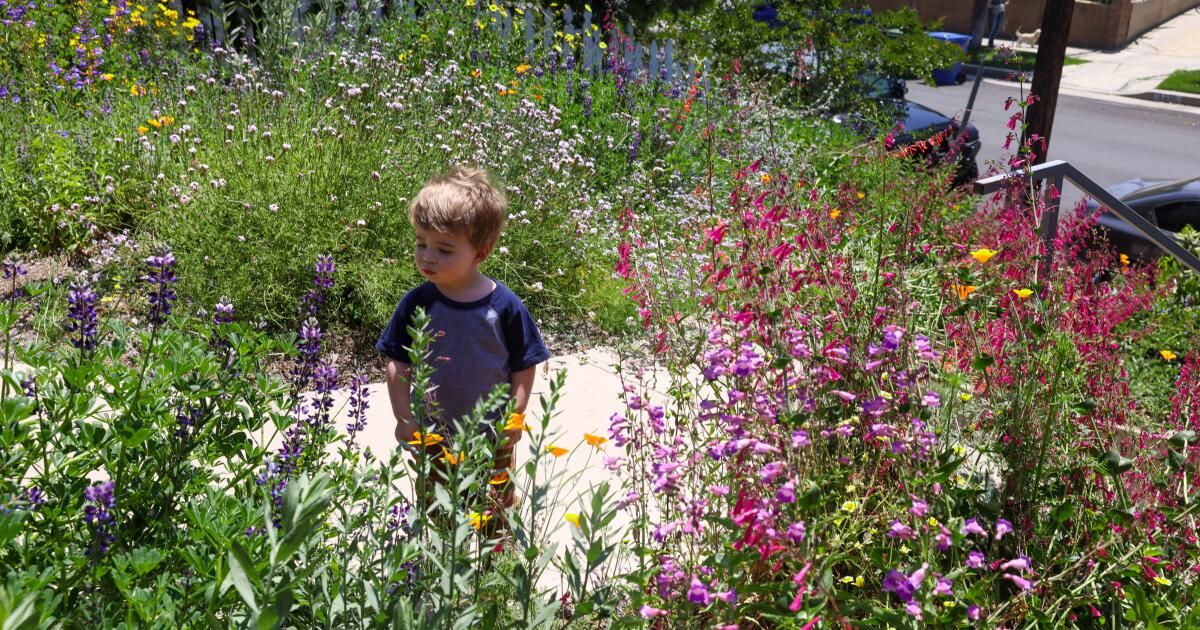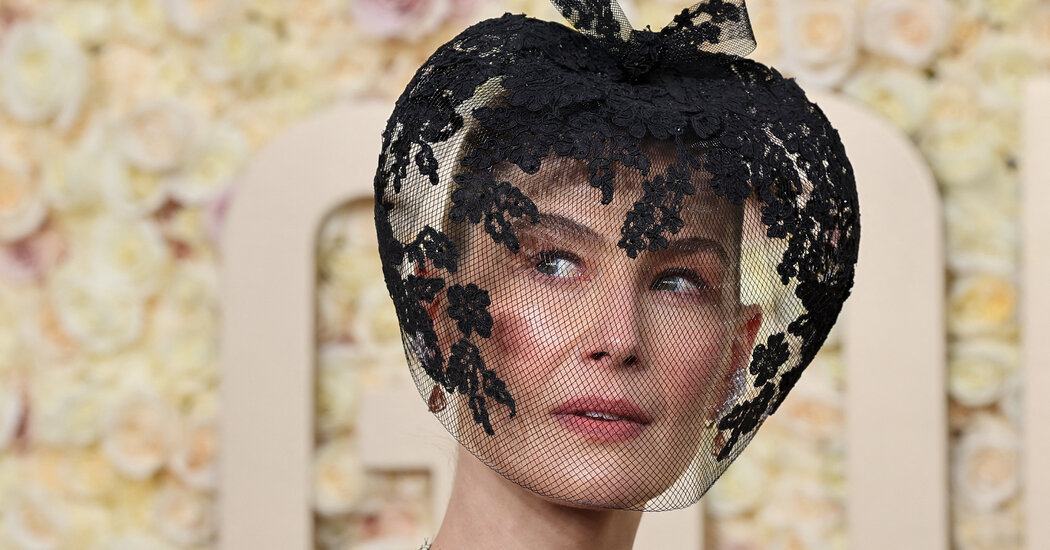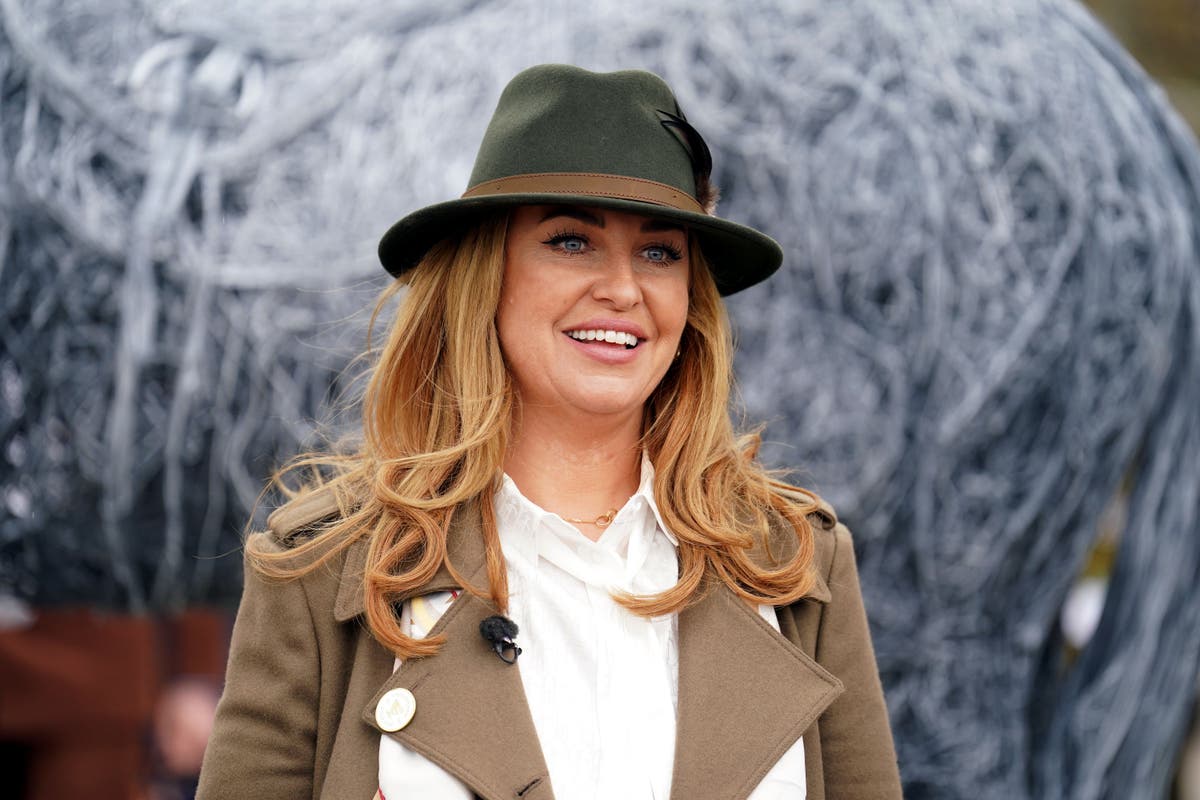Water-hungry lawns are symbols of Los Angeles' past. In these seriesWe highlight patios with alternative low-water landscaping built for the future.
Looking out the front windows of their northeast Los Angeles home, Kyle Anido and Katie Cordeal say their front yard is barely recognizable from a year ago, when it was grass.
“It's crazy to see how lively the garden is now,” says Anido, a 37-year-old cameraman. “There's so much bee activity.”
A bee is attracted to Bird's-Eye Gilia in Katie Cordeal and Kyle Anido's front yard.
“It has completely exploded,” adds Cordeal, 38. “It's quite incredible what has happened in the last 12 months. And this year we haven't even watered the garden.”
The colorful ecosystem, which thrives without sprinklers, amendments, fertilizers, gardeners or gas-powered gardening equipment, is not lost on Owen, the couple's two-and-a-half-year-old son.
“Bees!” she shouted happily from the front porch, pointing out the pollinators feeding on the native California flowers in her front yard.
“Owen loves bugs,” Anido says of the boy's vibrant playground.
Newsletter
Subscribe to our LA Times Plants newsletter
At the beginning of each month, get a summary of upcoming plant-related activities and events in Southern California, along with links to tips and articles you may have missed.
You may occasionally receive promotional content from the Los Angeles Times.
When the couple bought their first home in 2021, the front yard was a boring strip of Bermuda grass, an oddly placed palm tree that real estate agents hastily planted for staging purposes, and white gravel.
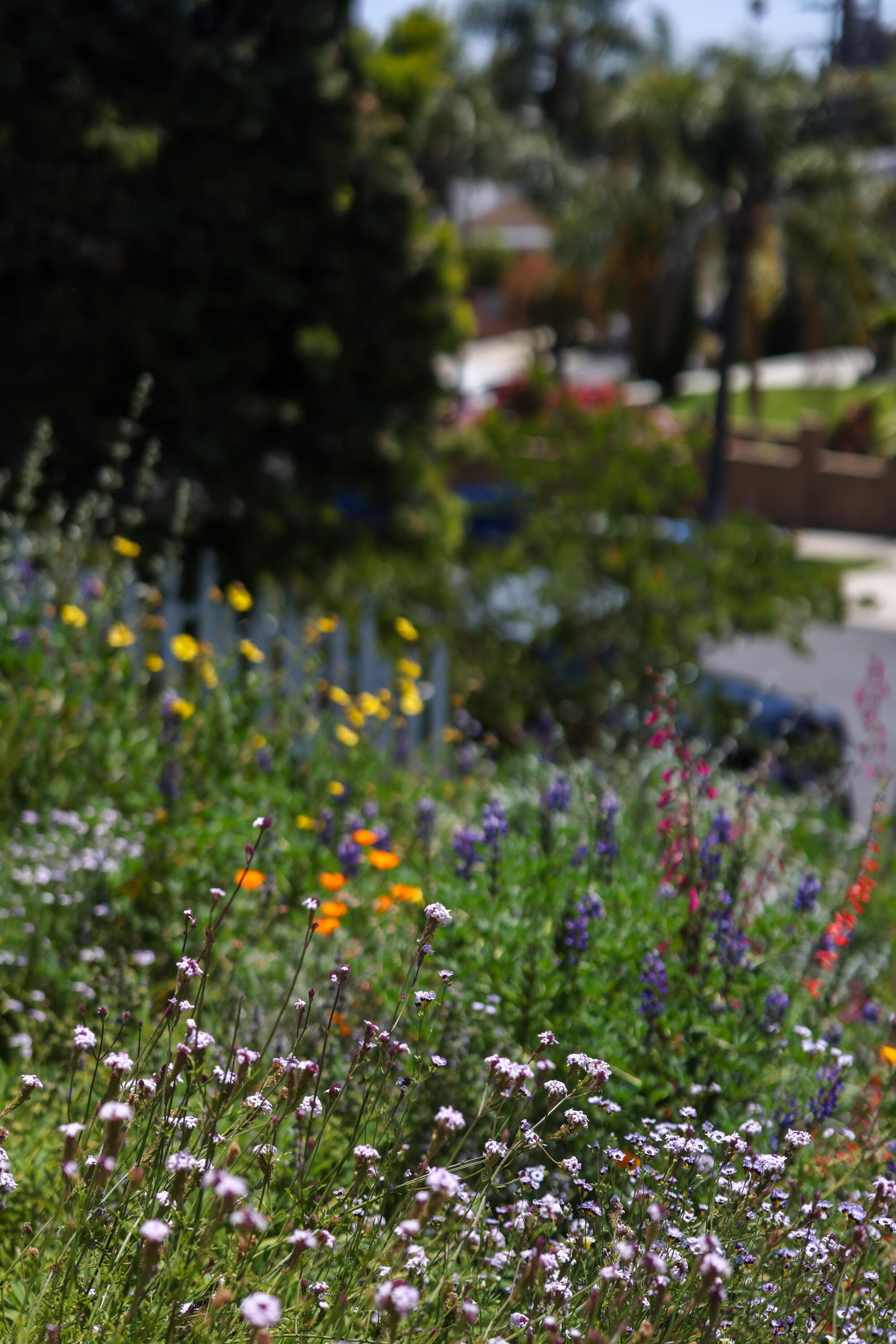
Homeowners Katie Cordeal and Kyle Anido wanted a colorful, drought-tolerant landscape.
(Dania Maxwell/Los Angeles Times)
After renting an apartment in Brooklyn, the couple felt intimidated by the prospect of tending a house and garden and decided to stay with the previous owners' gardener. They did this, they say, because it was easy, but the noise and air pollution of the weekly “cut and blow” proved difficult for Cordeal, who works from home as a film and television production accountant.
“We had to close all the doors and windows because the gas-powered leaf blower was making a lot of noise,” he says. “I hated the smell of gas.”
Interested in conservation and drought-tolerant plants, the couple contacted garden designer Sophie Pennes of Urban Farms LA after seeing the before and after of her lawn transformations (and her feedback on the lawn ) on TikTok.
“I identified with what seem to be Sophie's main drivers: supporting biodiversity, revitalizing natural ecosystems and conserving water,” says Cordeal. “Plus, I noticed that she is educated and passionate about what she does, and I enjoyed her dry humor.”
While this year's record rainfall may seem like an excuse to reconsider the argument for eliminating thirsty grass, that's ridiculous, says Pennes, who specializes in edible gardens and California native gardens.
“Pulling up the lawn is much more than saving water,” says the landscaper. “You don't have to be a scientist to see the negative impact of grass on the native habitat of a given city or ecology. It's obvious when you walk through a neighborhood, stand in front of a lawn, and then stand in front of a native garden: you can see wildlife. We need to get involved in the places where we live.”
Before and after photos courtesy of Katie Cordeal.
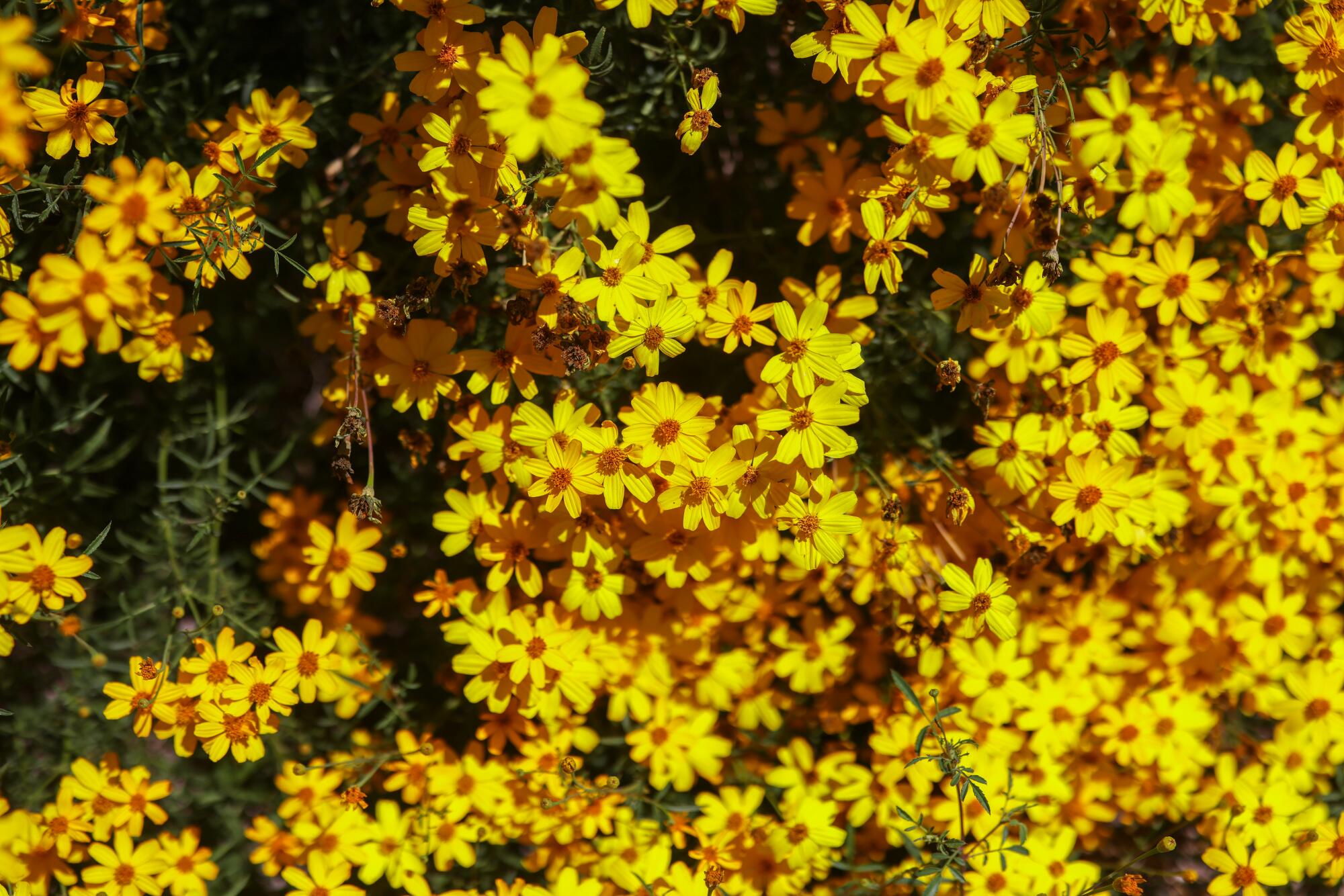
Mexican marigolds repel pests and attract birds.
After agreeing on a plant palette that included lots of color, nostalgia, texture and tall grasses, the couple hired a landscape contractor to remove the grass by hand. Then they mulched the front yard, covering it with wet cardboard, and waited three months.
When it came time to plant, Pennes installed repeat groups of three, including ceanothus, Canyon Prince Wild Rye and penstemon. “He wanted to achieve a bold effect when things were in bloom,” he says of the homeowners' request for a colorful landscape. “I didn't want it to be casual; “I wanted it to be spectacular.”
A year later, the front garden is what they expected. From the street, the 1937 residence appears modest: a two-bedroom house with two large windows. But the garden is really spectacular. “It's a magical walk to the front door,” Cordeal says of the lupins, poppies, penstemon and sage that bloom on either side of the stairs leading to the house.
Pennes designed the garden so that there is always something in bloom, regardless of the season. The purple Showy Penstemon is starting to fade, for example, but the clarkia flowers are ready to open. In the parking strip, Hollyleaf Cherry and hardy Canyon Prince Wild Rye offset pink clarkias and California bluebells. “Canyon Prince wild rye has such a beautiful gray-green color that it stands out against the backdrop of the gray house,” Pennes notes.
Non-native plants include African basil, “which bees love,” Cordeal says, as well as Meyer lemon trees and Hass avocados, which the couple feed with water from their bathtub through a gray water system installed by Greywater Corp. Pennes also planted Mexican plants. calendula to help repel pests and attract wildlife. “The finches love it,” Pennes says. “As soon as you put the plants in, the butterflies and birds find them. It really is an ‘if you build it, they will come,’” he laughs.
The couple estimates they paid about $14,900 for the transformation, including design, labor, plants, trees and mulch. After removing 1,150 square feet of grass in the front yard and parking strip, his $5,750 grass replacement rebate from the Department of Water and Power reduced the total to $9,150. Over the past year, the couple also saw their water bill decrease by 90%. “Our June/July 2022 water bill was $210.99,” says Cordeal. Your June/July 2023 water bill was $24.28, including the additional water used to establish the 1-gallon plants.
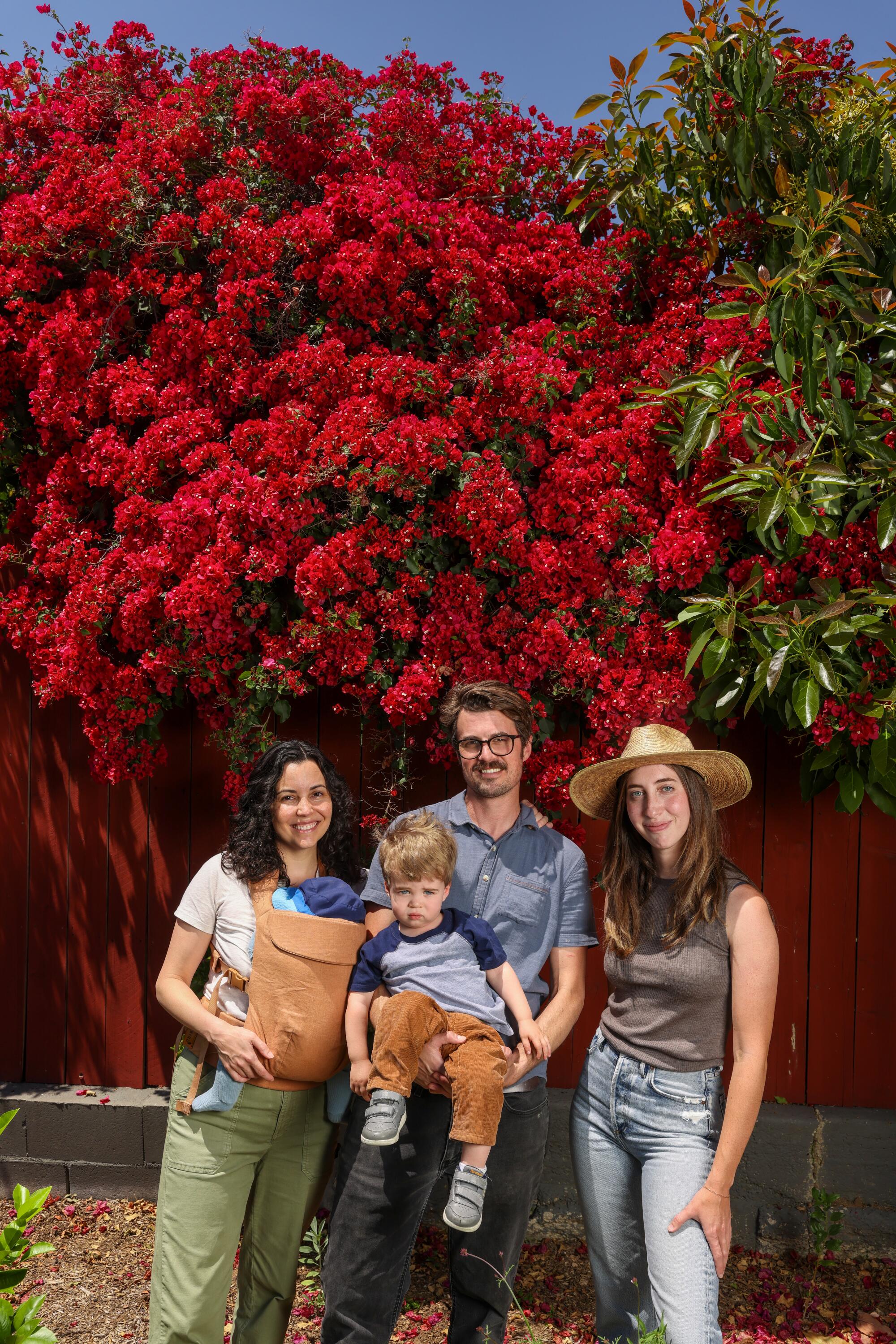
Owners Katie Cordeal and Kyle Anido with their newborn Felix, little Owen, and Sophie Pennes of Urban Farms LA, right, who helped design the garden.
But they don't stop there. They are in preliminary talks with Pennes about renovating their excessively hot backyard.
“We want to eliminate most of the concrete,” says Cordeal. “We want an orchard and another fruit tree that can use gray water. We want a lot more foliage in general to freshen up the backyard. We also need to find plenty of play space for our two children, but we're not sure what the ground cover will be.”
You can be sure it won't be artificial grass.
“My biggest enemy is plastic grass,” Pennes says. “Even if I have a chance to tear it off, it ends up being plastic garbage in a landfill.”
Cordeal says the beauty of the garden is more than just visual.
“Our front yard is an environmentally friendly place,” he says. “It's so nice to look outside and see all the color and wildlife. I have a chair right by the front window and when I'm nursing my 3-month-old son, I can look outside instead of at my phone. It is a joy”.

